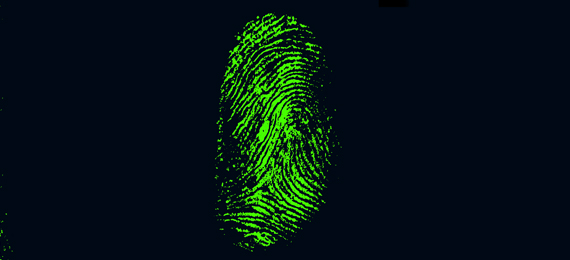
It’s hard to find a movie that involves a crime scene without the usage of the “fingerprint concept”. It’s a great way to solve hard crimes. You would have watched in movies how fingerprints are important in a crime scene. Police in movies as well as in real-life use this concept to solve crimes. But the only difference is the process is not as easy and quick as shown in the movies. Sometimes, it may even take hours to find one fingerprint.
What Are Fingerprints?
Fingerprints are formed when you were in your mother’s womb i.e before you were even born. They help humans by providing a grip to hold any object. There are three basic types of fingerprints: Whirls, loops, and ridges. Among these, about 65% of people have a loop type of fingerprints.
Myths of Fingerprints
There are many common misconceptions about fingerprints, this article would help you learn the myths of fingerprints.
1. How Many Basic Types of Fingerprints Are There?
- A. 2
- B. 3
- C. 4
- D. 5
1) It Is Easy to Find a Criminal With Fingerprints
This is one of the forensic science fingerprints myths. It is usually not easy as shown in the movies to find a criminal with fingerprints. There are two major national databases of fingerprints: Firstly, IDENTI- If a person is charged and arrested for a crime the police record the DNA and fingerprints of the particular person. Secondly, IABS, where they collect the fingerprints of all non-UK citizens when they visit the country. Even though it seems organized, it takes longer than you imagine.
2) Everyone Is Born With Fingerprints
Everyone is born with fingerprints, but there are some rare cases in which people might not have fingerprints. It is due to a unique and rare condition called Adermatoglyphia. People who suffer from this disease, do not usually have fingerprints since birth. This disease is mostly inherited but is extremely rare. It is usually caused by changes in the SMARCAD1 gene. The perk of this disease, one can easily get away with any murder.
3) There Is Only One Type of Fingerprint
There is one of the myths of fingerprints among people that there is only one type of fingerprint. But in a criminal investigation, the police divide the fingerprints into three different types, latent, patent, plastic. Firstly, latent fingerprints cannot be seen to the naked eye. They are usually formed oils and sweat that is deposited on the surface of your skin. It involves special techniques to identify the prints. One of the common fingerprints tests is the powder technique in which they dust some fine powder and uses a transparent tape to lift the pattern. Patent and plastic fingerprints are visible to the bare eyes. Patent fingerprints are made by blood, grease, paint, etc. Plastic fingerprints are usually three-dimensional and are formed if one presses their hands in soap, paint, or wax, etc.
4) Fingerprints Alone Are Enough to Convict
This is another common law and order myth of fingerprints, charging and arresting a person is not that easy as it involves the lives of the particular person, their family members who are dependent on him/her, it also involves their respect and dignity. So, the fingerprint evidence alone is not enough for a person to be arrested. During the investigation, the police collect it as a major clue or proof and try to match it with the other proofs. Only when they are sure about all the proofs and it matches with the accused person further steps are taken. This is followed as some times the fingerprints might be smeared or smudged and may lead to the wrong accusation.
5) Only Humans Have Fingerprints
Scientists have now discovered that some species like gorillas, chimpanzees, and orangutans have prints in the fingers and toes that are similar to the patterns of humans. These prints help them climb trees, hold things, etc. But surprisingly, one more animal that has never been related to humans are found to have fingerprints. Koalas! They are also found to have a similar kind of fingerprints as humans except that they only have it on the tip of their hands while humans have it all over the palm, fingers, etc.
6) Identical Twins Have Similar Fingerprints
According to the National Forensic Science Technology “No two people have ever been found to have the same fingerprints– including identical twins”. The skin on the palm and feet forms papillary ridges. They form unique patterns and not even two identical twins sharing the same DNA have similar fingerprints. Surprisingly, one important thing that is to be noted is that even your own fingers will differ from each other in prints. This is the fingerprint science that everyone must know.